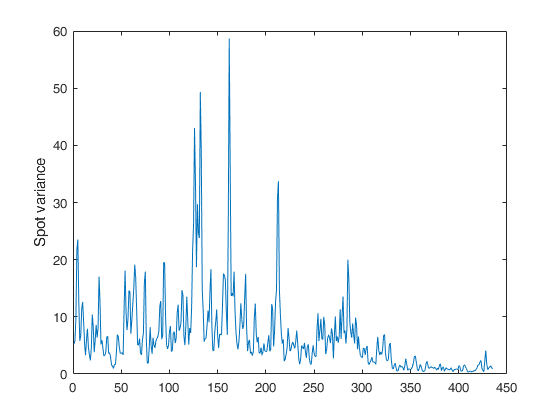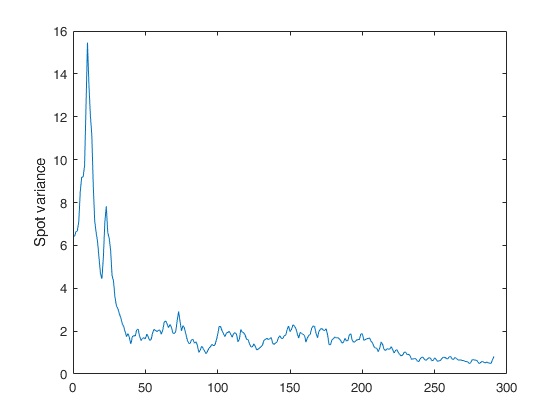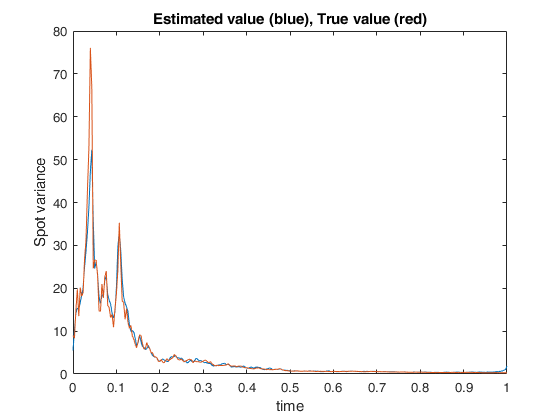We assume our timeseries data are discrete observations from a diffusion
process $x$ following the It\^o stochastic differential equation
$$dx(t)= \sigma(t) \ dW(t) + b(t) \ dt,$$
where $W$ is a Brownian motion on a filtered probability space. Let
$\sigma$ and $b$ be random processes, adapted to the Brownian filtration.
See the Reference for further mathematical details.
The squared diffusion coefficient $\sigma^2(t)$ is called
instantaneous variance of the process $x$.
For any positive integer $n$, let ${\cal S}_{n}:=\{ 0=t_{0}\leq \cdots
\leq t_{n}=T \}$ be the observation times. Moreover, let $\delta_i(x):=
x(t_{i+1})-x(t_i)$ be the increments of $x$.
The Fourier estimator of the instantaneous variance for $t \in (0,T)$,
is defined as
$$\widehat \sigma^2_{n,N,M}(t):= \sum_{|k|\leq M} \left(1- {|k|\over
M}\right) e^{{\rm i} {{2\pi}\over {T}} tk} c_k(\sigma^2_{n,N}),$$
where
$$c_k(\sigma^2_{n,N}):= {T \over {2N+1}}\sum_{|s|\leq N} c_s(dx_n)
c_{k-s}(dx_n),$$
where for any integer $s$, $|s|\leq 2N$, the discretized Fourier
coefficients of the increments are
$$c_s(dx_{n}):= {1\over {T}} \sum_{i=0}^{n-1} e^{-{\rm i} {{2\pi}\over {T}}
st_i}\delta_i(x).$$
 Example of call of FE_spot_vol_FFT with just two input arguments.
Example of call of FE_spot_vol_FFT with just two input arguments.

